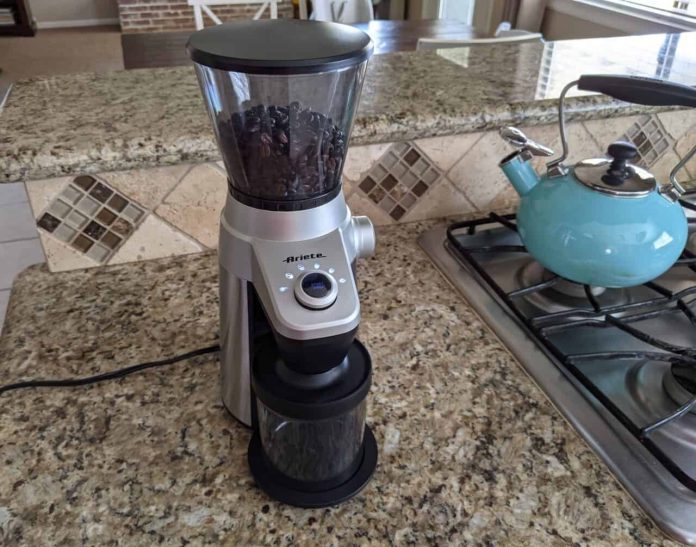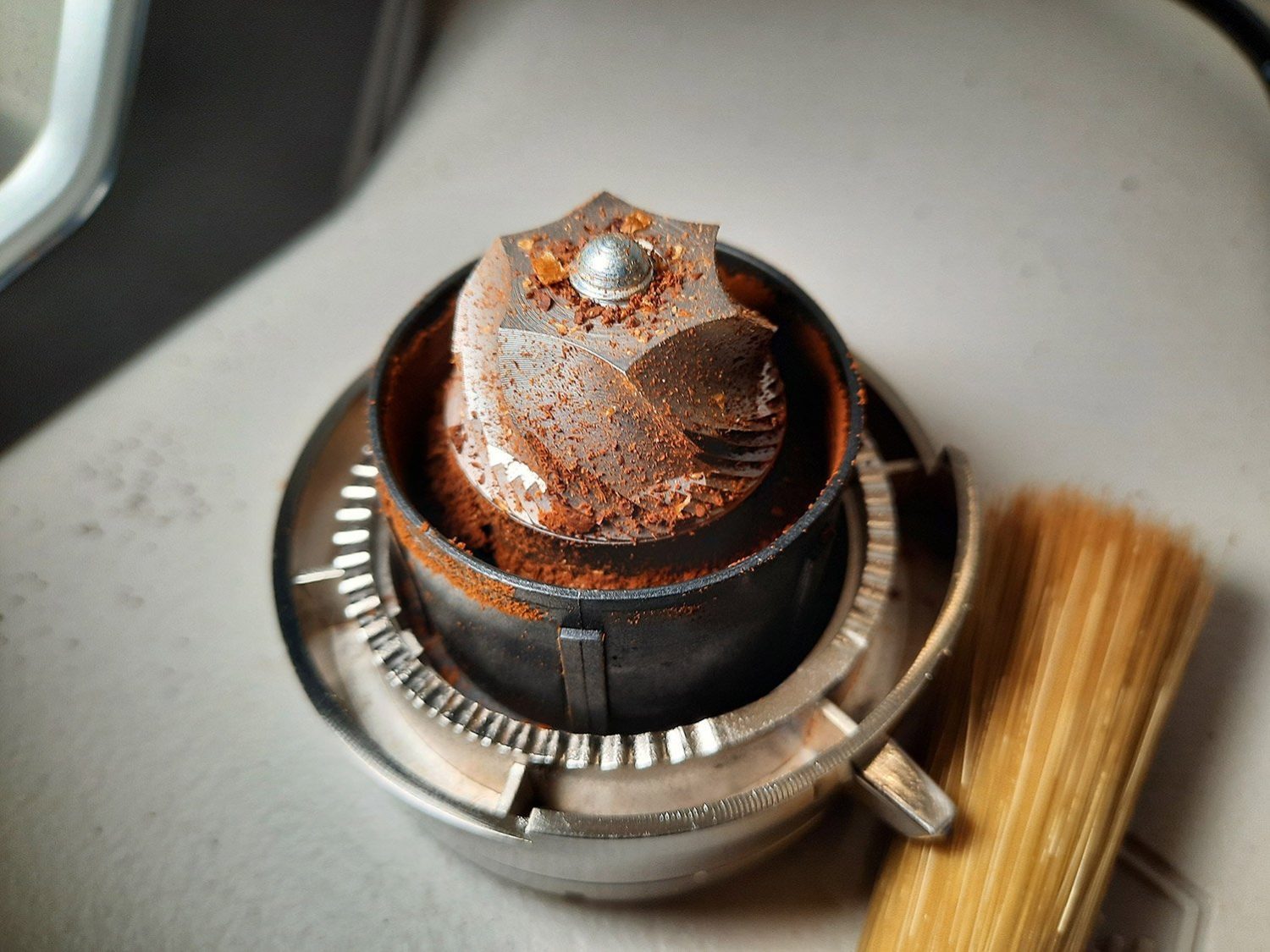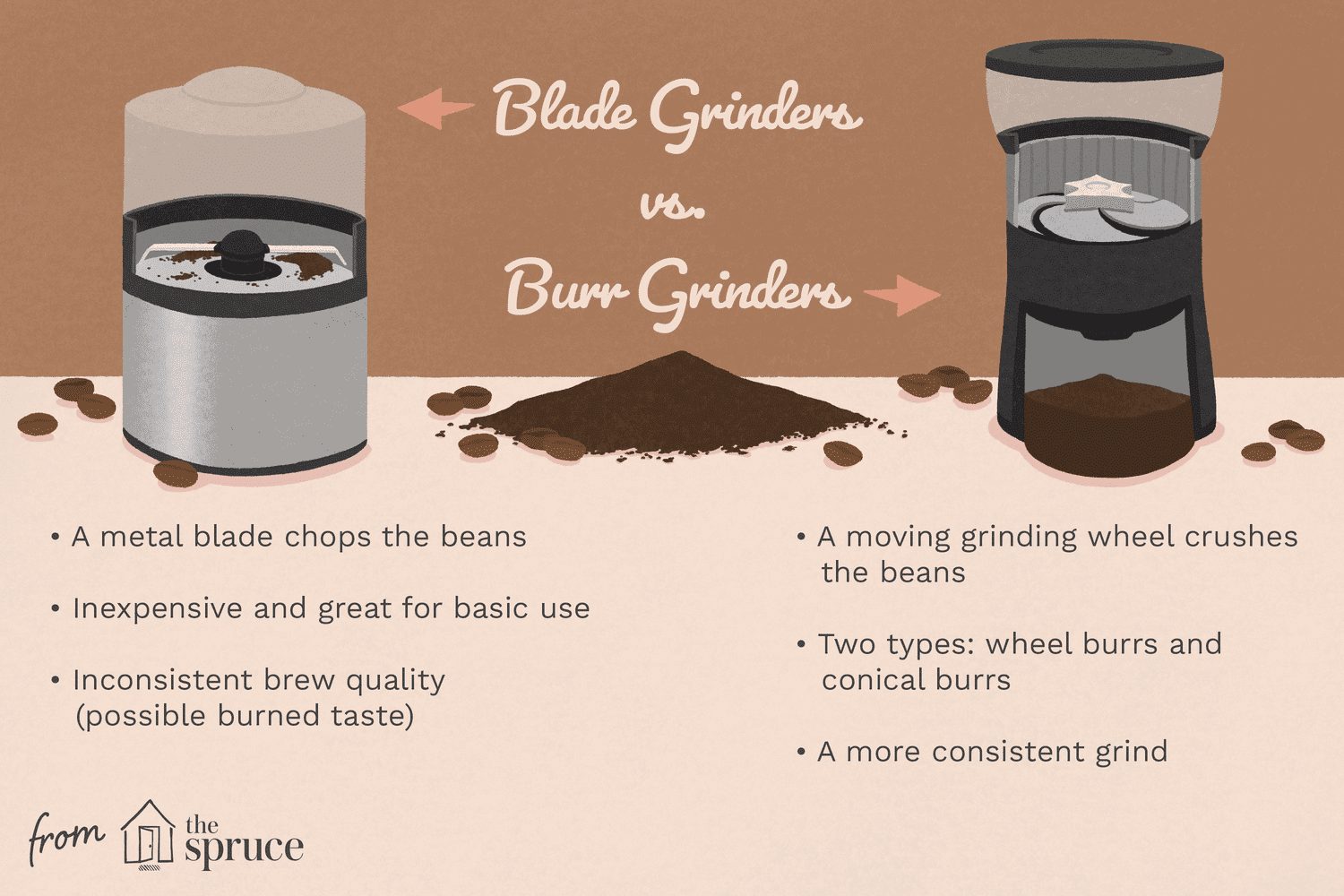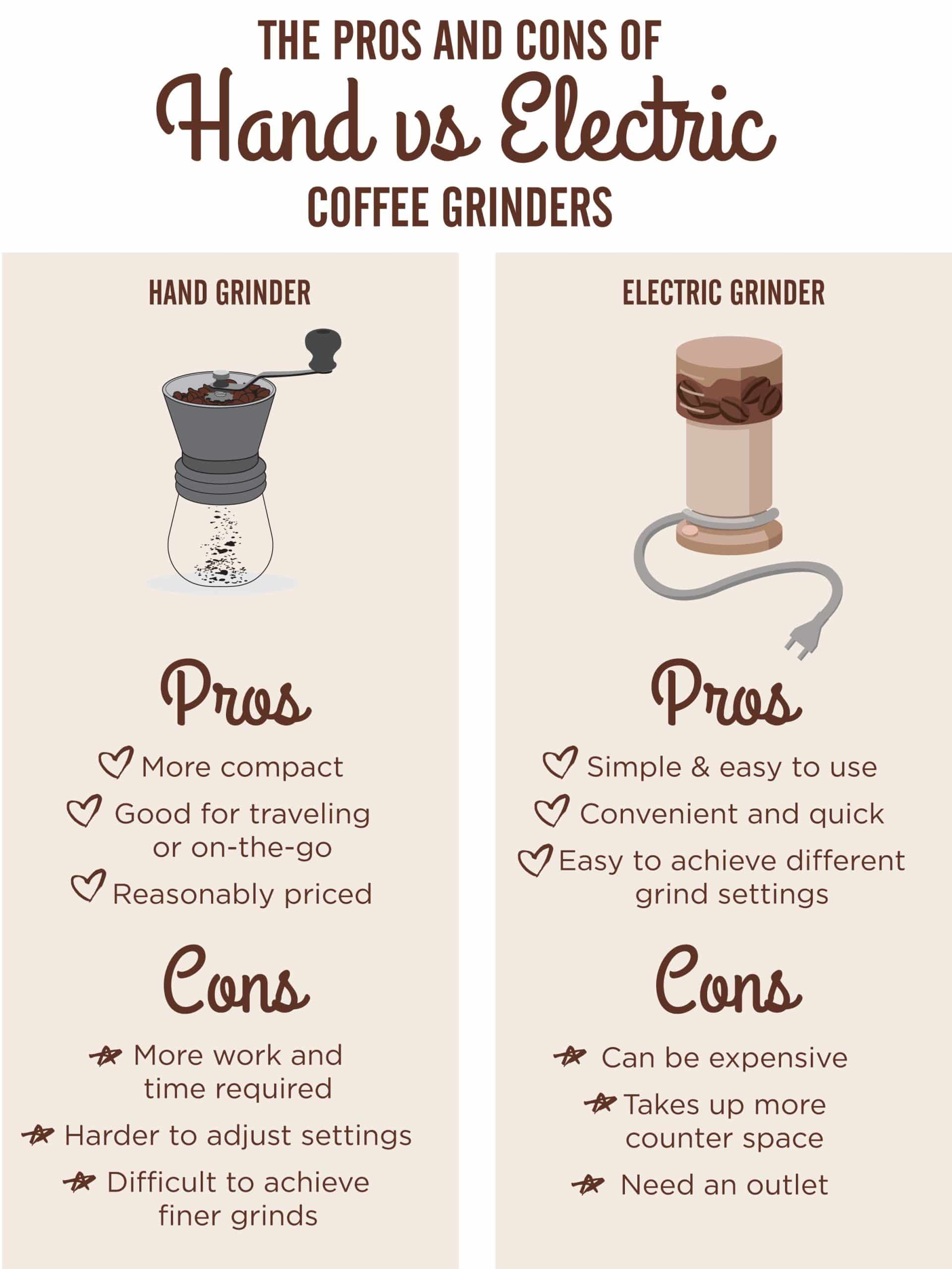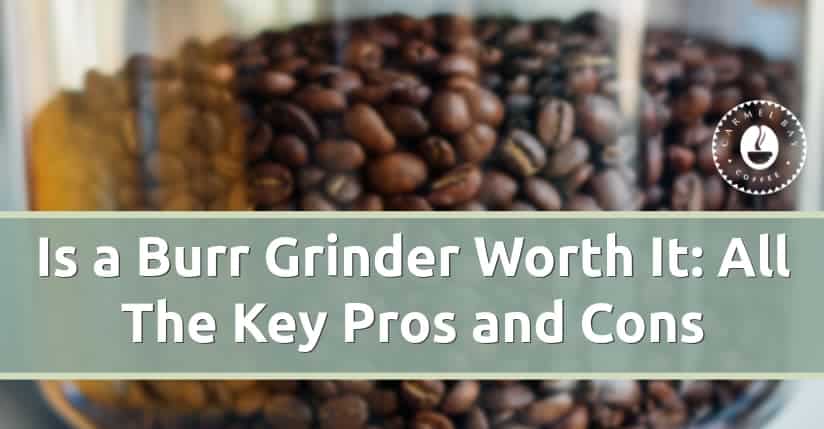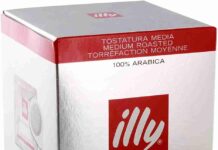Ah, the coveted burr grinder, a key tool in the coffee enthusiast’s arsenal. With its ability to produce a consistent grind size, it has become a staple in many kitchens. But let’s not forget that no tool is without its flaws. In our journey to uncover the truth, we ponder upon the potential disadvantage of the burr grinder. Has its perfect reputation been shattered? Fear not, as we delve into this question, we shall uncover the answer and equip ourselves with a well-rounded perspective.
This image is property of carmelbaycoffee.com.
Uneven Grind
Inconsistent Particle Size
When it comes to grinding coffee beans, consistency is key. However, one major disadvantage of a burr grinder is its potential for producing an uneven grind. The burrs, which are the two abrasive surfaces that crush the beans, can sometimes create particles of varying sizes. This inconsistency in particle size can have a significant impact on the extraction process and ultimately affect the taste of the coffee.
It affects the extraction process
The extraction process is crucial in bringing out the flavors and aromas of the coffee. However, when using a burr grinder that produces an uneven grind, the extraction process becomes more challenging. The smaller particles tend to over-extract, resulting in a bitter taste, while the larger particles may be under-extracted, leading to a weak and watery brew. Achieving that perfect balance becomes difficult, and it can impact the overall quality of the coffee.
Uneven extraction leads to uneven taste
One of the most noticeable effects of an uneven grind is the inconsistent taste it produces in the brewed coffee. The varying sizes of the coffee particles result in uneven extraction, where some particles are over-extracted and others are under-extracted. This inconsistency in extraction leads to a brew with an imbalanced flavor profile. The taste of the coffee can vary from cup to cup, making it difficult to achieve the desired consistency and quality in every brew.
Expensive
Initial Cost
While burr grinders are known for their superior grind quality, they often come with a higher price tag compared to other types of grinders. The precision engineering and durable materials used in the construction of burr grinders contribute to their higher initial cost. For those on a budget, this can be a significant disadvantage, especially when considering alternatives that offer a more affordable entry point into the world of coffee grinding.
Maintenance Cost
In addition to the initial cost, burr grinders also require regular maintenance to ensure optimal performance and longevity. This maintenance often involves cleaning the burrs and other components to remove coffee residue and oil buildup. Some models may also require periodic calibration or adjustment to maintain consistent grind quality. These maintenance requirements can add to the overall cost of owning a burr grinder over time.
Replacement parts are expensive
If any parts of a burr grinder become damaged or need replacing, it can be costly to find and purchase the specific parts required. This is particularly true for higher-end burr grinders, where specialized components may need to be sourced directly from the manufacturer. The expense associated with replacing parts can be a significant disadvantage for those who prefer the convenience and cost-effectiveness of easily accessible replacement components.
Noise Level
Loud operation
One aspect of burr grinders that can be off-putting to some is the noise they produce during operation. The grinding process typically involves the burrs rotating at high speeds to crush the coffee beans, resulting in a loud grinding noise. This noise level can be particularly disruptive in quiet environments, such as early mornings or in shared living spaces. For those seeking a more peaceful coffee brewing experience, the noise generated by burr grinders can be a drawback.
Disturbs the peace
The loud operation of burr grinders can disturb the peace and tranquility of your surroundings. Whether you’re trying to enjoy a quiet morning alone or if you have roommates or family members who are still asleep, the noise from the grinder can be disruptive. This drawback may be especially noticeable when living in close quarters with others or in situations where minimizing noise is essential, such as in an office or a peaceful work-from-home environment.
Not suitable for quiet environments
If you prefer a calming and quiet atmosphere while making your morning cup of coffee, a burr grinder may not be the best option for you. The noise generated by the grinding process can make it difficult to maintain a peaceful environment. While the quality of the grind may be excellent, the disturbance caused by the noise may outweigh the benefits, especially if maintaining a quiet ambiance is important to you.
Size and Portability
Bulky and heavy
Another disadvantage of burr grinders is their size and weight. Many burr grinders are bulkier and heavier compared to other types of coffee grinders. This can be a significant drawback for those who have limited counter space or who prefer a more compact and portable coffee brewing setup. The bulkiness and weight of a burr grinder make it less convenient to move or store, making it a less ideal option for those who are constantly on the go or have limited space.
Not ideal for traveling
If you’re someone who enjoys your coffee on the road or frequently travels, a burr grinder may not be the best choice. Due to their larger size and weight, burr grinders can be cumbersome to pack and transport. Carrying a bulky grinder can take up valuable space in your luggage or become an additional item to juggle while on the move. For those who prioritize portability and convenience, a more compact and lightweight grinder may be a better option for coffee on the go.
Requires ample space
Setting up a coffee brewing station with a burr grinder requires a fair amount of space. The size and design of burr grinders often dictate the need for a dedicated spot on your countertop or coffee bar. If you have a small kitchen or limited space available, fitting a burr grinder into your setup may be a challenge. Additionally, the need for easy access to the grinder for grinding and maintenance purposes further emphasizes the necessity for ample space in your coffee brewing area.
This image is property of cdn.thecommonscafe.com.
Time-consuming
Grinding process takes longer
One aspect that can make burr grinders less appealing to time-conscious coffee lovers is the lengthier grinding process. The precision of burr grinders means that each bean is crushed gradually and consistently, resulting in a finer and more uniform grind. However, this detailed process takes more time compared to other types of grinders. So, if you’re constantly rushing in the morning or prefer a quick cup of coffee, the longer grinding time of a burr grinder can be a disadvantage.
Impacts overall coffee brewing time
The longer grinding time of a burr grinder has a direct impact on the overall coffee brewing process. If you’re someone who likes to enjoy a quickly brewed cup of coffee, using a burr grinder can extend the time it takes to prepare your morning beverage. This drawback is particularly noticeable for individuals who may already have a busy schedule or need to optimize their morning routine. The extra time spent grinding the coffee can be a hindrance for those seeking convenience and efficiency.
Not suitable for on-the-go individuals
For individuals who have a hectic lifestyle or are always on the go, a burr grinder may not be the most practical choice. The time-consuming nature of the grinding process can be inconvenient for those who need their coffee quickly while running out the door. Whether you’re a busy professional or a student with a packed schedule, the additional time required to grind coffee beans with a burr grinder may limit its usability for on-the-go individuals who prioritize speed and convenience.
Heat Generation
Friction generates heat
A lesser-known disadvantage of burr grinders is the heat generated during the grinding process. With the burrs rotating at high speeds and grinding the coffee beans, friction is inevitable. This friction generates heat, and the longer the grinding process, the more heat is produced. While this may not be a significant issue for casual coffee drinkers, those who are passionate about the quality and flavor of their coffee may find this heat generation problematic.
Heat can alter the flavor of coffee
The heat generated during the grinding process has the potential to alter the flavor of the coffee. Excessive heat can cause the oils in the coffee beans to degrade, resulting in a change in flavor and aroma. The longer grinding time of burr grinders can exacerbate this issue, as the beans are exposed to heat for a longer duration. This drawback is particularly noticeable for those who appreciate the delicate nuances in the taste of their coffee and prefer the most optimal brewing conditions.
Increased chances of burnt coffee
If the heat generated during the grinding process becomes excessive, there is a risk of the coffee beans becoming burnt. The excessive heat can not only affect the flavor but also lead to a bitter and unpleasant taste. For individuals who strive for a well-balanced cup of coffee, the possibility of burnt coffee due to heat generation can be a drawback. It may require additional precautions and monitoring to prevent the beans from being exposed to excessive heat during grinding.
This image is property of www.thespruceeats.com.
Requires Skill and Experience
Needs practice to achieve desired grind size
Using a burr grinder effectively and consistently requires a certain level of skill and experience. Achieving the desired grind size depends on various factors, such as adjusting the grind settings and understanding the interaction between the burrs and the beans. The process involves trial and error, as finding the perfect grind size for your preferred brewing method can take time and practice. This learning curve can be a downside for those who value simplicity and ease of use.
Inconsistent results for beginners
For beginners or those new to coffee brewing, using a burr grinder may result in inconsistent and subpar results. Without a good grasp of the different grind sizes and their impact on the extraction process, it is easy to end up with a poorly brewed cup of coffee. The lack of experience and understanding can lead to frustration and discouragement, especially when compared to the simpler operation of other types of grinders. The initial learning phase required for consistent results is a disadvantage for entry-level coffee enthusiasts.
May require adjustment throughout usage
Even for experienced coffee enthusiasts, burr grinders may require periodic adjustments to maintain the desired grind quality. Factors like the age of the burrs, the type of beans being used, and changes in humidity can all affect the grind size. This means that ongoing vigilance and fine-tuning may be necessary to ensure a consistent and optimal grinding experience. While the ability to customize the grind size is a benefit, the need for continuous adjustment can be a drawback for those who prefer a more set-and-forget approach.
Static Electricity
Beans stick to the grinder
One common annoyance with burr grinders is the static electricity that can build up during the grinding process. This static electricity can cause coffee grounds to cling to the inside of the grinder, resulting in a messy cleanup process. The clingy coffee grounds can be difficult to remove, often requiring extra effort and time to ensure the grinder is thoroughly cleaned between uses. The static buildup and the resulting messiness can be a hassle for those who value easy maintenance and a clean coffee preparation area.
Messy cleanup process
Cleaning a burr grinder can be more involved than other types of grinders due to the static electricity issue mentioned earlier. The clingy coffee grounds and the intricate components of the grinder can make the cleanup process messy and time-consuming. Disassembling and cleaning the burrs, hopper, and other parts require careful attention to detail to ensure all residue is removed. The additional effort and potential mess associated with cleaning a burr grinder can be a drawback for those who prefer a straightforward and hassle-free cleanup routine.
Wastes coffee beans
The static electricity that causes the coffee grounds to stick to the grinder not only leads to a messier cleanup process but also results in wasted coffee beans. When the grounds cling to the inside of the grinder, it becomes difficult to extract all the coffee and transfer it to the brewing device. This can be frustrating, especially considering the effort and cost invested in acquiring quality coffee beans. The wasting of coffee beans due to static electricity is a disadvantage that can potentially impact both the enjoyment and cost-effectiveness of using a burr grinder.
This image is property of grosche.ca.
Limited Capacity
Smaller hopper size
Another drawback of some burr grinders is their smaller hopper size. The hopper is where the coffee beans are stored before being transferred to the grinding chamber. A smaller hopper means a limited amount of coffee beans can be loaded at once, requiring more frequent refilling. For those who consume larger quantities of coffee or often host gatherings, the limited capacity of some burr grinders can be impractical and inconvenient.
Frequent refilling required
The limited capacity of the hopper in some burr grinders necessitates more frequent refilling. This can be an inconvenience, especially for individuals who enjoy multiple cups of coffee throughout the day or for those who have a busy schedule and need their coffee readily available. The need for frequent refilling interrupts the brewing process and adds an extra step to the coffee preparation routine. For those who value efficiency and convenience, the limited capacity and subsequent frequent refilling can be a drawback.
Not suitable for large gatherings
If you often find yourself entertaining guests or hosting large gatherings, a burr grinder with limited capacity may not be the most practical choice. The need for frequent refilling due to the smaller hopper size can become a hindrance when trying to serve coffee to a larger number of people. Chatting with guests while also having to refill the hopper periodically can disrupt the flow of the gathering and make the coffee preparation process less enjoyable. For those who frequently host gatherings or events, a grinder with a larger capacity may be more suitable.
Requires Power Source
Electricity dependency
One significant disadvantage of burr grinders is their dependency on a power source, usually electricity. Unlike manual grinders that can be operated without electricity, burr grinders require a constant power supply to function. This means that using the grinder may not be possible during power outages or in situations where electricity is not readily available. The reliance on electricity can limit the versatility and flexibility of a burr grinder, particularly in outdoor settings or remote locations.
Inconvenient in power outages
In the event of a power outage, a burr grinder becomes temporarily unusable. This can be frustrating, especially if you rely on your morning coffee to get your day started. The inability to grind coffee beans during a power outage may require alternative coffee brewing methods or resorting to pre-ground coffee, which may not meet your taste preferences or the desired freshness. The inconvenience of not being able to use a burr grinder during a power outage is a drawback that can disrupt your coffee routine.
Not suitable for outdoor settings
For those who enjoy brewing coffee in outdoor settings, such as camping or picnics, a burr grinder’s reliance on a power source can be a significant limitation. With limited access to electricity, using a burr grinder may not be possible, thereby limiting your brewing options. This drawback can limit your ability to enjoy freshly ground coffee in the great outdoors and may require alternative brewing methods or pre-ground coffee to ensure a satisfying cup of joe on your outdoor adventures.
In conclusion, while burr grinders offer several benefits in terms of grind quality and customization, they are not without disadvantages. The uneven grind produced by some burr grinders can impact the extraction process and result in an inconsistent taste. The initial and ongoing costs associated with burr grinders, along with the noise they generate, may be drawbacks for budget-conscious individuals or those who prioritize a peaceful coffee brewing experience. The size and weight of burr grinders can make them less suitable for traveling or for those with limited space. The time-consuming grinding process, heat generation, and the need for skill and experience can be disadvantages for those seeking convenience and simplicity. Static electricity, limited capacity, and the need for a power source can also impact the usability and practicality of burr grinders in various settings. It is important to weigh these disadvantages against your specific needs and preferences to determine if a burr grinder is the right choice for you.
This image is property of carmelbaycoffee.com.


